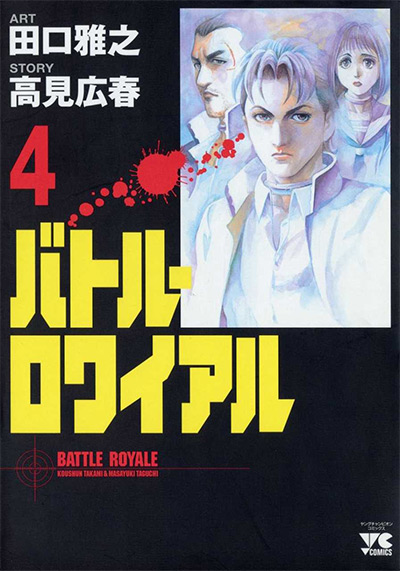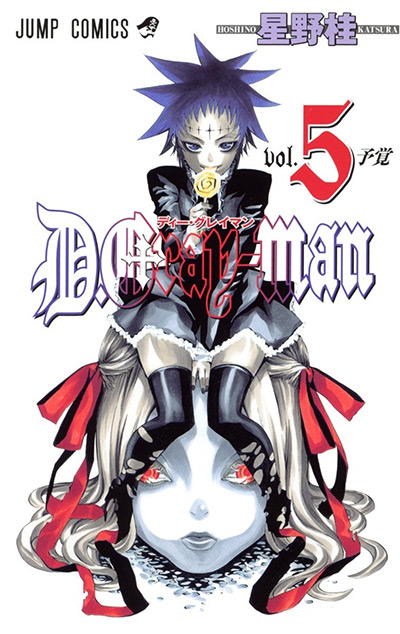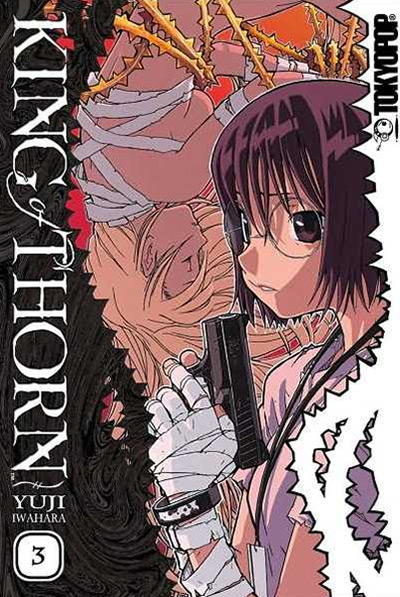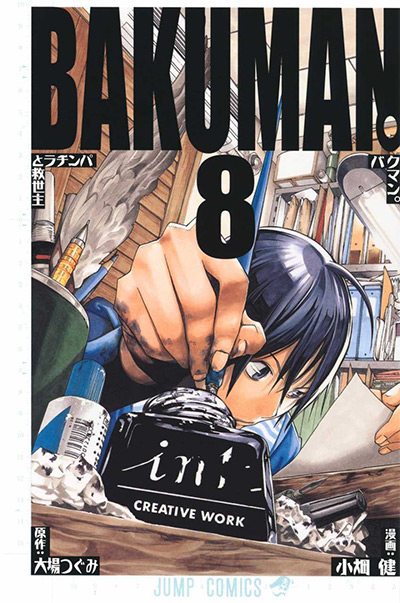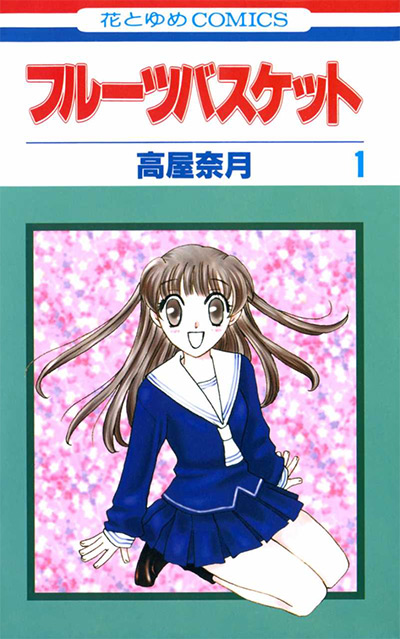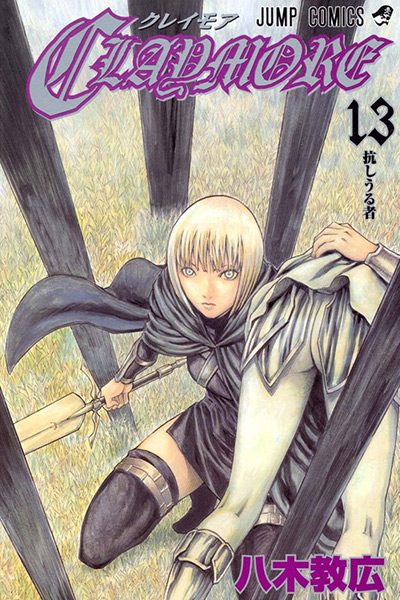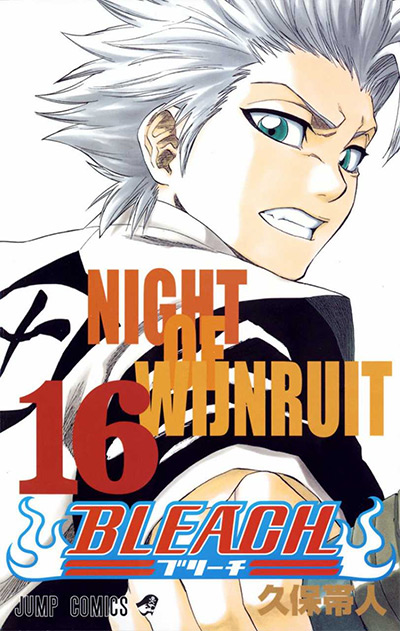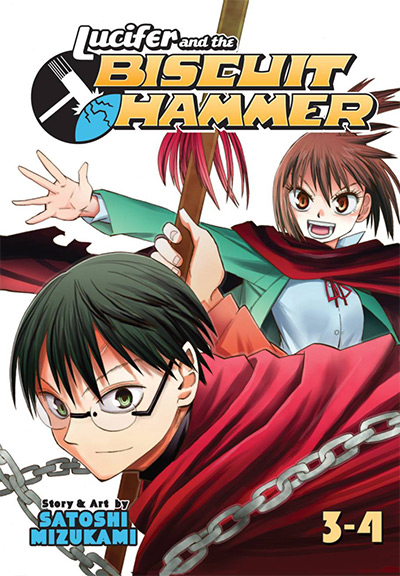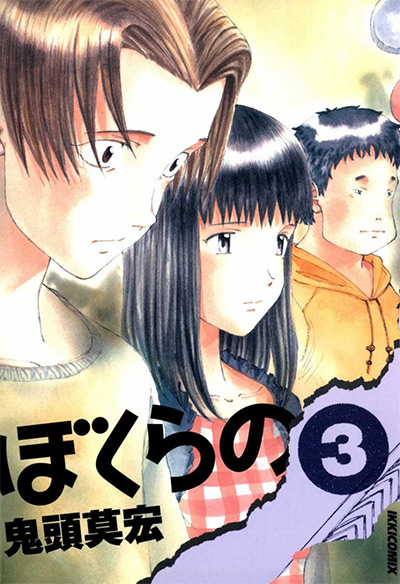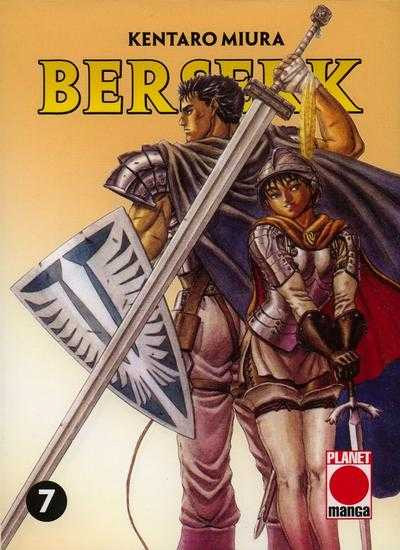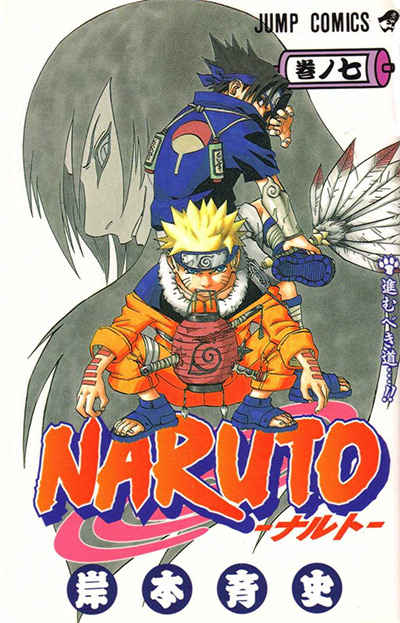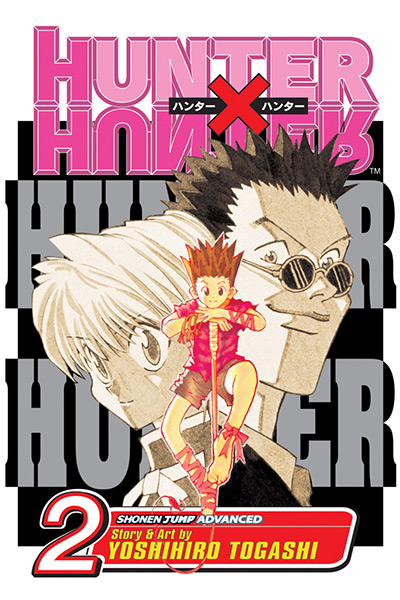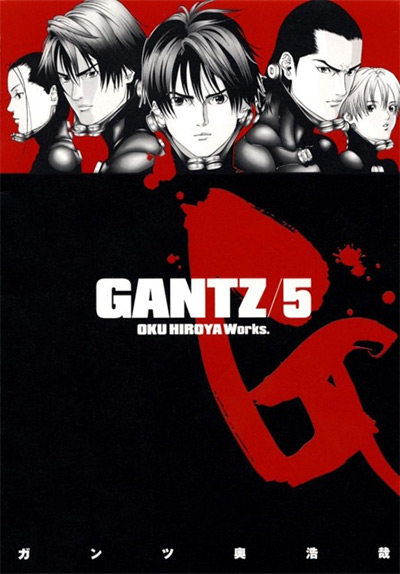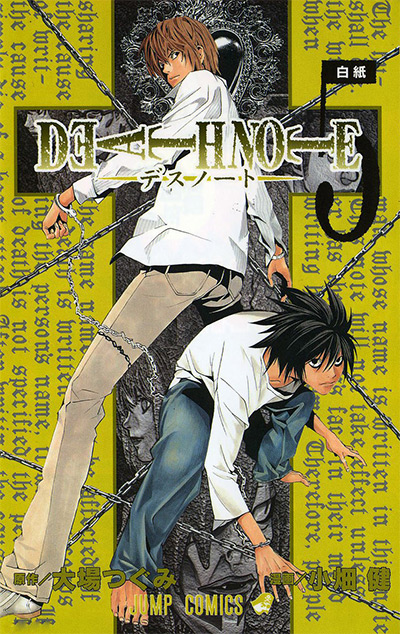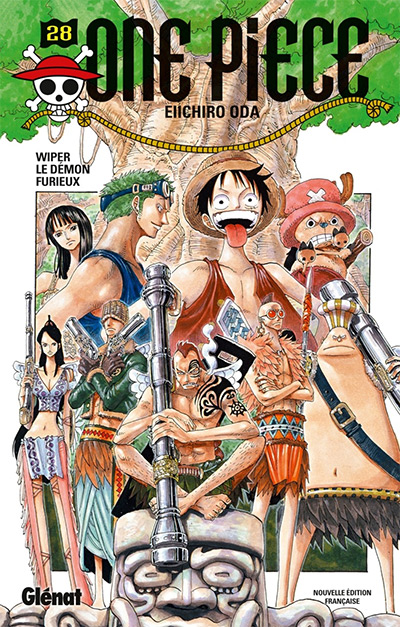It was like an entirely new world opened up when the monthly Shonen Jump magazine introduced fans to Naruto, One Piece, and Bleach. And then a whole new portal opened up through the unlicensed fan translations hidden online. The back half of the decade also saw an increasing crop of series with heavy themes and intense artwork breaking through. So let’s dive back in and see which manga series fared the best from 2000 to 2009.
15. Battle Royale
Written by Koushun Takami Illustrated by Masayuki Taguchi You could be forgiven for missing the social satire amidst the depravity and violence of Battle Royale. Koushun Takami adapted his infamous 1999 novel into this equally infamous manga that ran from 2000 to 2005. With its graphic depictions of high schoolers brutally, savagely, and remorselessly slaughtering each other, Battle Royale is not exactly a fun read. But it is engaging as hell. Beyond its gore and insanity is a stunning message against totalitarianism and facism, not unlike what we’d later see in The Hunger Games trilogy.
14. D. Gray-man
By Katsura Hoshino While the story took a bit to find its groove, D. Gray-man debuted in 2004 with a fully realized visual style. Full of doom and gloom, the demons haunting this quasi-Victorian world were legitimately scary and proved to be much more than fodder for our heroes – the exorcists of the Black Order. An engaging story unfolded over the years, with a host of popular characters and high-intensity arcs. But overall it has lost some momentum after a series of hiatuses and increasingly hard-to-follow plot points.
13. King of Thorn
By Yuji Iwahara At this point we’re all too familiar with a devastating virus spreading like wildfire. But King of Thorn felt very sci-fi when it debuted in 2002. When there is no cure in sight, our group of heroes are lucky enough to enter an early-stage medical trial where they’ll be put into cold sleep, presumably to be woken when a cure is discovered. Unfortunately for our heroes, they wake up to a world that has fallen to pieces, completely overrun by nature and ruled by impossible creatures. With plenty of exciting near-misses and shocking deaths, King of Thorn is a tightly plotted adventure full of inventive ideas and true WTF moments that still shock today.
12. Bakuman
Written by Tsugumi Ohba Illustrated by Takeshi Obata After writing and illustrating the mega-hit Death Note, Tsugumi Ohba and Takeshi Obata started this love letter to manga in 2008. It’s an informative and emotional story about two kids trying their hardest to make it as manga creators. Chock full of behind-the-scenes tidbits, it also pays respect to the classic Shonen Jump approach to manga. Our main characters are high schoolers shooting for the moon against impossible odds. They face off against rival authors, and put it all on the line to reach the top of the popularity rankings. But Bakuman isn’t just shonen by the books. It’s an expertly told story about who makes manga and what makes manga just so special.
11. Fruits Basket
By Natsuki Takaya It’s impossible to talk about shojo manga in the 2000s without talking about the cultural force that was Fruits Basket. Not only did it sell like crazy in Japan, but it managed to catch on in the US well before manga went fully mainstream. It follows a recently orphaned high schooler as she gets pulled into the orbit of a large and secretive family keeping a bizarre secret. Even with its boyishly good looks and animal-transforming madness, Fruits Basket is an emotional rollercoaster that readers are still enjoying 15+ years later.
10. Claymore
By Norihiro Yagi After finishing up the very funny and surprisingly wholesome Angel Densetsu, Norihiro Yagi took a completely different approach to Claymore, his dark fantasy epic that began in 2001. With an almost entirely female-led cast of warriors and an entirely ugly race of evil demons, Claymore began as a decent-enough battle manga with the anti-hero trappings of something like Berserk. But as it continued serialization, its characters gained unexpected depth, and its foes became much more than demons-of-the-week. What followed was an edge-of-your seat adventure that, in retrospect, lured you into this dark world with its earnest start and shocking plot developments.
9. Bleach
By Tite Kubo For a minute there, it really seemed like Bleach was going to be the manga of the decade. It had so much hype that people even called it one of the “Big Three”, along with heavy-hitters Naruto and One Piece. After a thrilling adventure in Soul Society, Ichigo Kurosaki’s come-from-behind miracle victories became less exciting and more — forgive me for this one — hollow. The Arrancar arc that followed was full of new characters and slick abilities, but couldn’t keep the magic alive. A recent one-shot published by Tite Kubo explores what happens to those banished to Hell – an early-early bit of lore that never came back until now. It’s an interesting glimpse at what could have been had Kubo explored Hell instead of Hueco Mundo.
8. Lucifer and the Biscuit Hammer
By Satoshi Mizukami After receiving instructions to participate in a supernatural battle to protect the world, Amamiya Yuuhi is not particularly convinced by the talking lizard in his bed. Of course, he comes to accept the weight of his situation with time. But this believably light-hearted approach to a classic shonen trope makes Lucifer and the Biscuit Hammer a certified cult-classic. It didn’t have a huge audience during its run from 2005-2010. But its tight 10-volume story featured enough fascinating twists and turns to earn its place here against the heavy hitters of the decade.
7. Bokurano
By Mohiro Kitoh Bokurano stars a wide cast of pre-teens thrust into some sort of intergalactic tournament, pitting their giant robot against giant robot in a series of brutal one-on-one matches. Beyond the battles, this series is famous for its heart-wrenching twist: that their mecha runs off its pilot’s own life force. Yikes! After a certain point, Bokurano becomes less about the giant battles and more about what it means to briefly be alive. With each character facing their imminent death, do they run off or give it their all? Do their actions have any consequence at all? No matter the outcome, it’s a brutal journey from start to finish.
6. Berserk
By Kentaro Miura From the Tower of Conviction all the way to an ill-planned trip to sea, this decade of Berserk cranked up the demonic hellscapes and monstrous foes while also chipping away at Guts’ deranged need for revenge. Despite the worsening conditions of the world and a piece of gear that tears away his sense of self, Guts’ unexpected traveling companions and a growing cast of precious allies slowly makes his journey easier to bear. And thankfully, that relief applies to us readers as well. This run of Berserk was just too good.
5. Naruto
By Masashi Kishimoto With an impressive attention to detail and a supremely relatable loser helming the series, Naruto was a winner right out the gate when it debuted in late 1999. Throughout the 2000s, Naruto quickly grew from a beloved manga into a full-on cultural force. The cutesy antics of the early chapters were cut short on a life-or-death mission with an entire town’s fate at stake. After the bittersweet victory over evil ninjas Zabuza and Haku, the series goes full steam ahead into the politically complex and war-ravaged world that Naruto struggles to navigate. And this is to say nothing of how the battles actually play out, with unforgettable ninjutsu and ultra-hype showdowns.
4. Hunter X Hunter
By Yoshihiro Togashi After finishing up Yuyu Hakusho, Yoshihiro Togashi took another go at the shonen genre with Hunter X Hunter, about Gon Freecss’ spirited adventure to find his father. Being a hunter was always a matter of life and death. But at the start of the series, it always felt like Gon would push through because he was the hero. That began to change during its run in the 2000s with the introduction of supernatural Nen abilities, and its fearsome wielders who operate in the shadows. In a short period of time, the series shifts from intriguingly dark adventures to full-on geopolitical conflicts. Kurapika’s quest for revenge gets bloody, fast. Greed Island is a serial killer’s paradise. The monstrous chimera ants eating people aren’t just dopey beasts. It’s a wild ride that is (hopefully) still chugging along to an insane conclusion that only Togashi could pull off.
3. Gantz
By Hiroya Oku Gantz was the defining “anything goes” manga when it ran from 2000 to 2013. Each chapter felt like a peak into an alternate reality, with its ultra-violent sci-fi battles unfolding against realistic scenery and familiar locations. And when it wasn’t all blood and exploding guts, it told a deeply (and sometimes inscrutable) emotional story about fighting an unwinnable battle and losing those close to you. It’s hard to imagine the insanity of something like Chainsaw Man catching on without the groundwork that Gantz laid out throughout the 2000s.
2. Death Note
Written by Tsugumi Ohba Illustrated by Takeshi Obata
Though it only ran from 2003 to 2006, Death Note is undeniably one of the defining manga of the 2000s.
In another creative’s hands, the titular notebook that kills whoever’s name is written in it would have been the absolute star.
But with Tsugumi Ohba behind the wheel, the Death Note is simply a tool for Light Yagami to bend the world to his will.
With a utopian vision for a life without crime, Light is willing to kill anyone standing in his way.
But what makes the series really pop is the introduction of L, the one foe he is unable to outsmart.
Caught in an ever-escalating game of cat-and-mouse, Light and L face off again and again until the first major arc comes to a thrilling conclusion.
Though its final story arc was less loved by its fans, it was a heart-pounder til the very end.
1. One Piece
By Eiichiro Oda Even if you took away the Alabasta, Skypiea, and Thriller Bark arcs, One Piece would still top this list. The Water 7 and Enies Lobby stories are just that good. After seven real-life years of forward momentum, this saga turns One Piece on its head when the Straw Hat Pirates struggle to stay together as they face off against the absolute power of the world government. It’s an emotional ride that forged the Straw Hat Pirates into the stuff of champions, making them one of the most formidable crews in the Grand Line. And for us readers, it also marks the exact point that One Piece undeniably became the best manga of the 2000s era.
